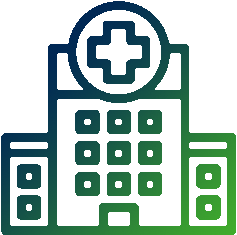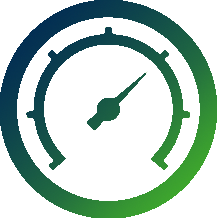Patients and health systems deserve clinicians thriving and operating at their best.
Improve Clinical Workflows
EvidenceCare's clinical decision support software is designed to create more efficient clinical workflows with a focus on empowering better care decisions and improving hospital margins.
Doctors don’t need more invasive technology.
They need the right information at the right time.
Our software is designed with our end-users in mind for improved clinical workflows.

Trusted by Top Health Systems






Clinical Workflow Solutions
Clinical workflow solutions are digital tools utilized in the healthcare system to enhance communication and collaboration, make clinical tasks easier, and improve patient care. These tools can streamline work in a hospital or clinic and minimize errors due to communication gaps.
Updating the Electronic Health Records (EHRs) system manually or searching for patient information can be time-consuming. In the healthcare environment, every second is essential, and any delay could be costly.
Clinical workflow solutions create efficiency because they minimize manual input in most healthcare processes and are designed for the clinicians using them. Different departments can coordinate and collaborate seamlessly without wasting time or waiting for another department to make updates.
Clinical workflow solutions involve various technologies, people, organizations, and activities, all working to address workflow issues in healthcare. As a result, a smooth flow of data allows for quick decision-making and improvement in providing patient care.
Significance of Clinical Workflows
The importance of workflow in healthcare cannot be overstated, and more healthcare providers are adopting clinical workflow solutions. It is expected that the adoption of these digital solutions globally will increase.
The main benefits are their ability to improve patient care while bringing costs down significantly. The process of diagnosis, testing, getting results, and admission takes a short time, and clinicians can make informed decisions quickly.
There are different types of clinical workflows, but they can be broadly categorized as follows:
-
- Parallel clinical workflow: This category involves different tasks that can be carried out simultaneously, typically requiring coordination between departments or teams.
- Sequential clinical workflow: These workflows follow a linear format and are often ideal for routine tasks.
- Contingent clinical workflow: This category is flexible and suitable for changing environments. These could be unexpected outcomes of patient tests.
- Ad hoc clinical workflow: These workflows involve non-routine and unique tasks. They require a flexible approach to accommodate special patient needs.
Examples of Workflow Analysis in Healthcare
Clinical workflow analysis is an essential component of healthcare process improvement. Healthcare providers can analyze the various steps in delivering healthcare services to patients and identify inefficiencies.
You can also utilize workflow analysis to identify bottlenecks and develop solutions to improve overall patient care. The workflow analysis aims to optimize healthcare processes by reducing waste and improving clinical communication and coordination.
One common application of workflow analysis is in medication management. Workflow analysis can reveal where certain medications are prescribed more often.
How Workflow Analysis Can Improve Processes
By identifying patterns, healthcare providers can implement changes to improve patient outcomes. Some examples of workflow analysis in healthcare are inpatient admission and discharge, medication allocation, admission carousel, and many others.
Using workflow analysis, you can identify areas where delays often occur in admitting and discharging patients. As a result, appropriate measures can be adopted.
Workflow analysis also improves care management workflow, utilization management workflows between payers and hospitals, cross-departmental communication, and collaboration among healthcare providers.
Healthcare providers can identify essential information that could be missing by improving communication and collaboration. Here are some examples of healthcare workflows analysis in healthcare:
-
- Patient admission and discharge process: Analyzing patients’ admission and discharge process can identify areas for improvement, such as reducing wait times.
- Diagnostic testing: These tests involve analysis of the process of performing and interpreting diagnostic tests.
- Surgical procedures: Analyzing different surgical procedures could identify areas to be optimized to reduce turnaround times and improve team coordination.
- Medication management: Evaluating medication management workflow will highlight inefficiencies in medication administration.
- Emergency department (ED) operations: Improving workflow in ED will help improve operations and reduce waiting times.
- Electronic health records (EHR): Analyzing EHR systems can point out inefficiencies and challenges in the documentation processes. These could be data entry errors or duplication.
- Chronic disease management: Studying the management of chronic diseases like diabetes will point out inefficiencies and better approaches to develop.
How to Improve Clinical Workflows
Clinical workflows are essential in healthcare service delivery because they expedite patient diagnosis, treatment, and management. The process involves several steps, various personnel, and diverse technologies.
Typically, a healthcare automation workflow will reduce costs, in addition to improving patient outcomes. Establishing an effective clinical workflow that combines automation with clinical expertise is critical for seamless collaboration between clinicians and administrators.
An effective clinical workflow system will facilitate the efficient diagnosis of patients and minimize errors. Integrating different clinical systems to achieve seamless workflow is one of the most important approaches to improving clinical workflows.
For example, communication systems can be integrated with EHRs or radiology. An automated alert can significantly improve and speed up workflows. However, outdated communication methods will significantly affect productivity in healthcare. Therefore, improving or upgrading the mode of communication will improve productivity and minimize waste.
Here are some strategies on how to improve workflow in healthcare settings:
-
- Integration: Integrating different technologies will significantly improve clinical workflow.
- Upgrading Communication systems: Using the latest, most modern modes of communication will simplify and improve workflow.
- Automation: Clinical workflow automation is another strategy to improve clinical workflows. Automating electronic health record processes enhances clinical decisions.
- Identify inefficiencies: To improve workflow, inefficiencies and other bottlenecks must be identified.
- Optimization: Identifying and fixing problems to achieve clinical workflow optimization is critical.
- Standardization: Standardizing processes is critical to improving the efficiency and effectiveness of the healthcare delivery service.
- Training: Improving clinical processes requires changes in healthcare providers’ work. Providing staff training and education can help ensure they understand new procedures.
- Communication: Standardized handoff protocols or electronic communication tools can help improve communication.
- Invest in technology: Technology improves clinical processes. Healthcare organizations can invest in EHR systems, integrated CDS software, patient portals, and other digital tools to help streamline processes.
- Constant improvement: Clinical workflow improvement should be a continuous process. You can’t set it and forget it.
Clinical Decision Support for Workflows
Clinical Decision Support for Workflows offers timely information for healthcare providers to make decisions. Clinical Decision Support (CDS) uses technology-based tools to provide real-time clinical guidance during patient care.
Clinical workflow decision support can take over common routine tasks and offer suggestions for clinicians to consider. It’s possible to improve efficiency, lower costs, and reduce errors by using CDS.
By using an integrated clinical decision support platform, clinicians are assured of receiving reliable and consistent information relevant to the specific patient.
Improved Efficiency
The process of assessing a patient, making the diagnosis, deciding on the treatment plan, and accurately documenting medical necessity in the EHR can take time, and it’s often a complex task. If there is a mistake in the diagnosis, resources are always wasted.
Using Clinical Decision Support, clinicians stand a better chance of avoiding costly mistakes. The ability to constantly double-check themselves using evidence-based information minimizes errors considerably.
Cost-Effective
Clinical Decision Support Systems (CDSS) are cost-effective and can significantly reduce unnecessary imaging, test duplication, or unwarranted care variation. CDSS can suggest suitable treatments and dosages.
The system can suggest cheaper alternatives to drugs and conditions that insurance companies will cover. Additionally, clinicians can be alerted when medication orders interact with other medications already prescribed.
Advantages of Clinical Decision Support
Clinical Decision Support (CDS) for workflows provides several advantages for healthcare providers and patients, including:
-
- Cost savings: CDSS can help reduce healthcare costs by minimizing unnecessary tests, treatments, and hospitalizations.
- Increased efficiency: CDS systems can help automate clinical workflows, allowing healthcare providers to deliver care more efficiently.
- Minimal medication errors: Using CDS reduces the risk of medical error.
- Better clinical outcomes: Real-time clinical data allows clinicians to make informed decisions. As a result, patient outcomes are improved.
- Improved documentation: CDS systems can help ensure that clinical documentation is complete and accurate, which can be critical for billing, utilization review, and reporting.
Clinical Workflow Software
Clinical workflow software can keep regular processes in a healthcare environment flowing smoothly by not being invasive to a clinician’s current workflow. Clinicians and other staff can follow their routine processes by ensuring timely delivery, updating records, and more.
Clinical workflow tools are designed to automate regular processes and involve modules that can be customized to suit specific needs. They include care utilization, clinical documentation, care pathways, cost transparency, ordering of imaging tests, and billing.
Clinicians can easily access essential data on the clinical workflow platform and make quick patient decisions. Additionally, departments can easily coordinate for better patient assessments.
Why Clinical Workflow Software Is Essential
Clinical workflow software offers real-time updates, and healthcare providers can make decisions quickly. The software also provides analytics using the most recent data, and healthcare providers can make reliable data-driven decisions.
The software can track the patient’s progress enabling clinicians to offer the right patient care. In addition, it can simplify other processes, such as accounting and billing, making it easier for healthcare organizations to manage their finances.
The following are some of the advantages of clinical workflow software:
-
- Automation: The software automates scheduling appointments, prescription refills, and other tasks.
- Real-time data analytics: Data from patients, EHRs, and other sources can be analyzed in real-time to obtain relevant information.
- Customization: Organizations can customize the software for specific needs.
- Integration with other technologies: Clinical workflow software can be integrated with EHR and other technologies.
- Mobile accessibility: Healthcare providers can access patient data on their mobile devices anywhere, anytime.
In today’s fast-paced working environment, clinical workflows ensure high-quality patient care. Clinical Workflow Solutions can automate and streamline clinical workflows. As a result, errors are reduced, and efficiency is improved.
Healthcare organizations can create efficient, more effective clinical workflows and provide superior patient care. They can also be integrated with other technologies.
Want to get started with optimizing clinical workflows?
Schedule a demo of the EvidenceCare clinical workflow platform today!







